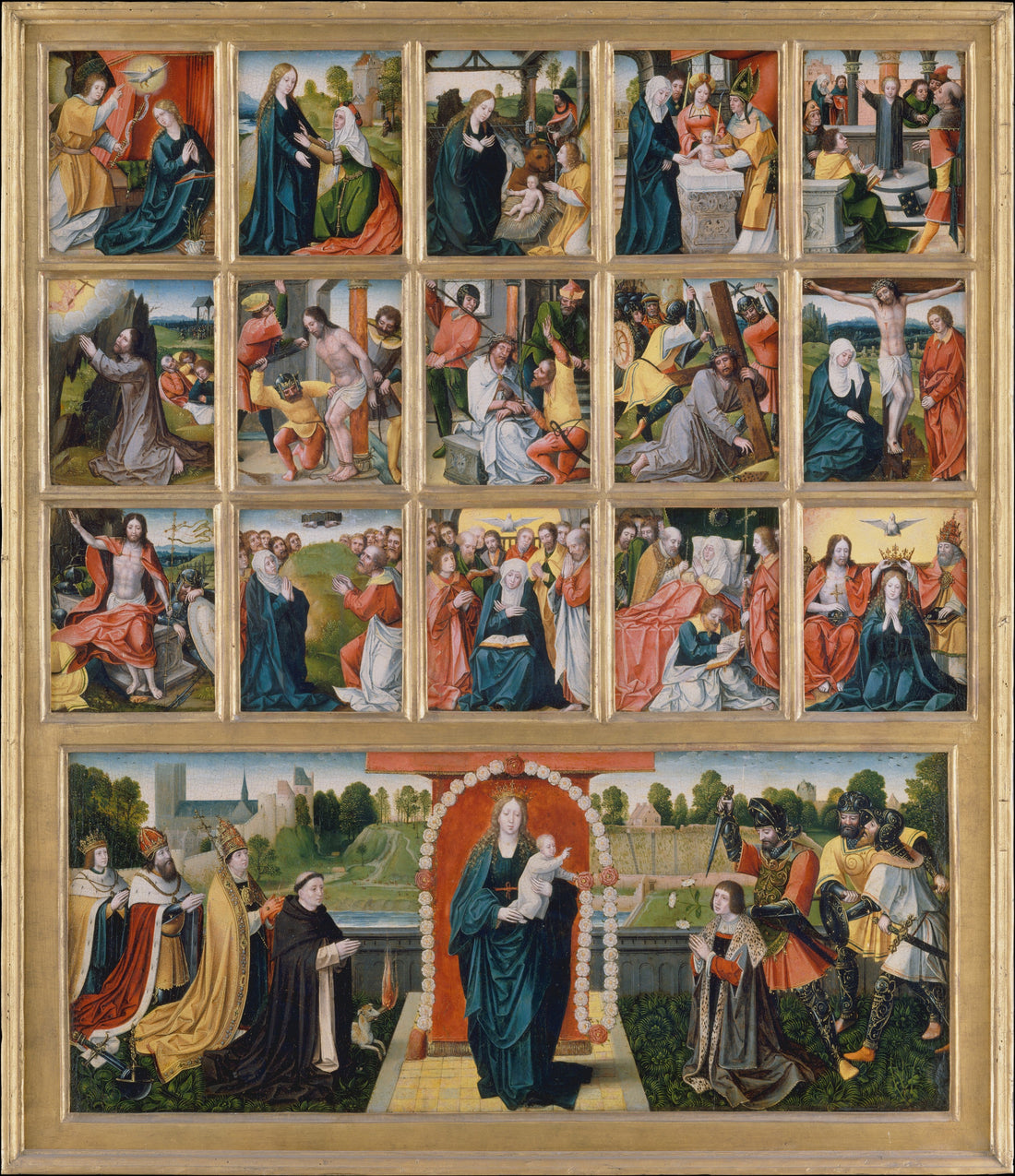
Uncovering the Sacred History of the Catholic Rosary: From its Origins to Modern Day
The Holy Rosary is one of the most well-known and widely practiced forms of prayer in the Catholic faith. This powerful devotion, consisting of prayers and meditations on the lives of Jesus Christ and the Virgin Mary, has been a cornerstone of Catholic spirituality for centuries. In this blog post, we will explore the rich history of the rosary, tracing its origins and evolution over time, and examining its enduring significance in the lives of the faithful.
Early Origins: From Desert Fathers to Medieval Monks
The origins of the rosary can be traced back to the early Christian monastic communities in the deserts of Egypt and Syria. The Desert Fathers, who sought to grow closer to God through a life of solitude and prayer, are believed to have recited repetitive prayers using a string of beads or knots. This practice eventually spread to Europe, where it was adopted by monks in monasteries as a way of counting their daily prayers, specifically the recitation of the Psalms.
By the early Middle Ages, the practice of using beads to count prayers had become more widespread among the laity. However, the form of the rosary as we know it today did not yet exist. Instead, the faithful would recite a series of Our Fathers or Hail Marys, often referred to as "Paternosters" or "Ave Marias." It was during this time that the practice of using a set of beads, often called a "Paternoster," became more common as a means of keeping track of these prayers.
The Birth of the Modern Rosary: St. Dominic and the Albigensian Crusade
The development of the modern rosary is often attributed to St. Dominic de Guzmán, the founder of the Dominican Order, who lived in the early 13th century. According to tradition, St. Dominic received a vision of the Virgin Mary while preaching against the Albigensian heresy in southern France. In this vision, Mary gave Dominic the rosary as a spiritual weapon to combat the heresy and convert the Albigensians back to the Catholic faith.
Though some historians dispute the historical accuracy of this account, the connection between St. Dominic and the rosary remains an essential part of the Dominican Order's spiritual heritage. It was through the efforts of the Dominicans and other mendicant orders that the rosary began to take its modern form, with a structured series of prayers and meditations centered around the lives of Jesus and Mary.

The Joyful, Sorrowful, and Glorious Mysteries
The development of the rosary continued throughout the Middle Ages, with various religious orders and individuals contributing to its evolution. By the 15th century, the structure of the rosary as we know it today had largely taken shape. The Joyful, Sorrowful, and Glorious Mysteries, which serve as the foundation for the meditations of the rosary, were established during this time.
These Mysteries, which encompass 15 events or "mysteries" in the lives of Jesus and Mary, provide a framework for meditation on the essential aspects of the Christian faith, from the Incarnation and the Crucifixion to the Resurrection and the Assumption. By reciting the prayers of the rosary and meditating on these Mysteries, the faithful are invited to contemplate the profound mysteries of salvation history and grow in their relationship with Christ and his Blessed Mother.
The Rosary in Modern Times: A Continuing Legacy of Prayer and Devotion
Throughout its history, the rosary has been a source of solace, strength, and spiritual growth for countless individuals. In times of crisis, such as during the Battle of Lepanto in 1571, the rosary has been credited with miraculous interventions, reinforcing its status as a powerful spiritual weapon. Pope St. Pius V, a Dominican himself, attributed the Christian victory at Lepanto to the intercession of the Virgin Mary, as a result of the faithful praying the rosary. This event led to the establishment of the Feast of Our Lady of the Rosary, which is celebrated on October 7th each year.
In more recent times, several popes have promoted the rosary as a powerful means of prayer and meditation. Pope St. John Paul II, a great advocate of the rosary, introduced the Luminous Mysteries in 2002. These new mysteries, which focus on key moments in Jesus' public ministry, serve to enrich the rosary's meditative aspect and draw the faithful deeper into contemplation of Christ's life.
In 2020, Pope Francis encouraged the faithful to rediscover the beauty of the rosary during the COVID-19 pandemic, emphasizing its role in providing comfort and strength during times of difficulty. Throughout its history, the rosary has remained a steadfast source of solace and guidance for the faithful.
The Rosary's Enduring Significance
The enduring significance of the rosary can be attributed to its simplicity and depth. As a form of prayer, the rosary is accessible to all, requiring only a set of beads and a willing heart. At the same time, the rosary invites the faithful to enter into a profound meditation on the mysteries of the Christian faith, contemplating the lives of Jesus and Mary and their role in our salvation.
In today's fast-paced, technology-driven world, the rosary serves as a powerful reminder of the importance of taking time for prayer and reflection. Whether prayed individually or in a group, the rosary has the power to draw us closer to Christ and his Blessed Mother, helping us to grow in faith and holiness.
The history of the Catholic rosary is a testament to the enduring power of prayer and the unwavering devotion of the faithful. From its early origins among the Desert Fathers and medieval monks to its current status as a beloved form of Catholic spirituality, the rosary has remained a constant source of strength and solace throughout the centuries. As we continue to embrace the beauty and depth of this ancient devotion, we are reminded of our connection to a rich spiritual heritage and the transformative power of prayer in our lives. Shop our paracord rosaries and deepen your devotion to this powerful Catholic practice.

